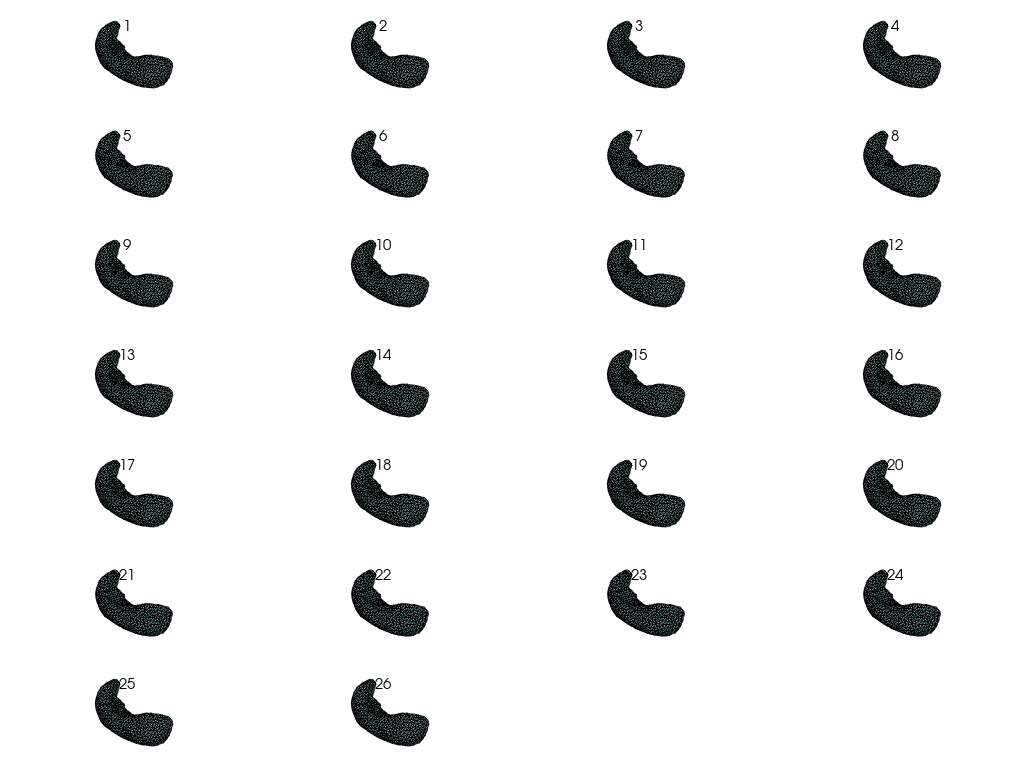LDDMM: how to estimate a deterministic atlas?#
This is analog to a registration problem for multiple meshes.
For registration between two meshes check LDDMM: how to register a mesh to a template?.
[1]:
import shutil
from pathlib import Path
import numpy as np
import pyvista as pv
import polpo.lddmm as plddmm
import polpo.preprocessing.dict as ppdict
import polpo.utils as putils
from polpo.plot.pyvista import RegisteredMeshesGifPlotter
from polpo.preprocessing.load.pregnancy.jacobs import MeshLoader
from polpo.preprocessing.mesh.io import DictMeshWriter
from polpo.preprocessing.mesh.registration import RigidAlignment
No CUDA runtime is found, using CUDA_HOME='/usr'
[2]:
DEBUG = False
RECOMPUTE = False
STATIC_VIZ = True
if STATIC_VIZ:
pv.set_jupyter_backend("static")
[3]:
OUTPUTS_DIR = Path("results") / "atlas_example"
ATLAS_DIR = OUTPUTS_DIR / "atlas"
if OUTPUTS_DIR.exists() and RECOMPUTE:
shutil.rmtree(OUTPUTS_DIR)
OUTPUTS_DIR.mkdir(exist_ok=True, parents=True)
Loading meshes#
[4]:
subject_id = "01"
session_subset = [1, 2, 3] if DEBUG else None
path2mesh = MeshLoader(
subject_subset=[subject_id],
session_subset=session_subset,
struct_subset=["L_Hipp"],
as_mesh=True,
)
pipe = path2mesh + ppdict.ExtractUniqueKey(nested=True)
meshes = pipe()
[5]:
pl = pv.Plotter(border=False)
for mesh in meshes.values():
pl.add_mesh(mesh, show_edges=True, opacity=0.5)
pl.show()
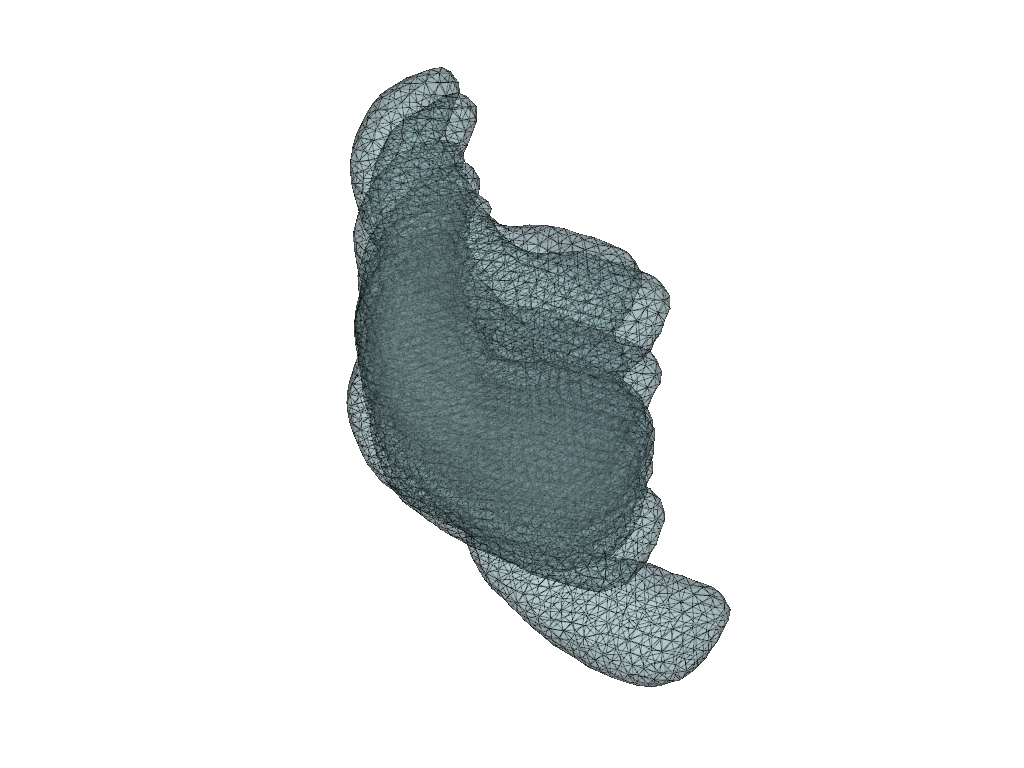
[6]:
prep_pipe = RigidAlignment(max_iterations=500)
meshes = prep_pipe(meshes)
[7]:
pl = pv.Plotter(border=False)
for mesh in meshes.values():
pl.add_mesh(mesh, show_edges=True, opacity=0.5)
pl.show()
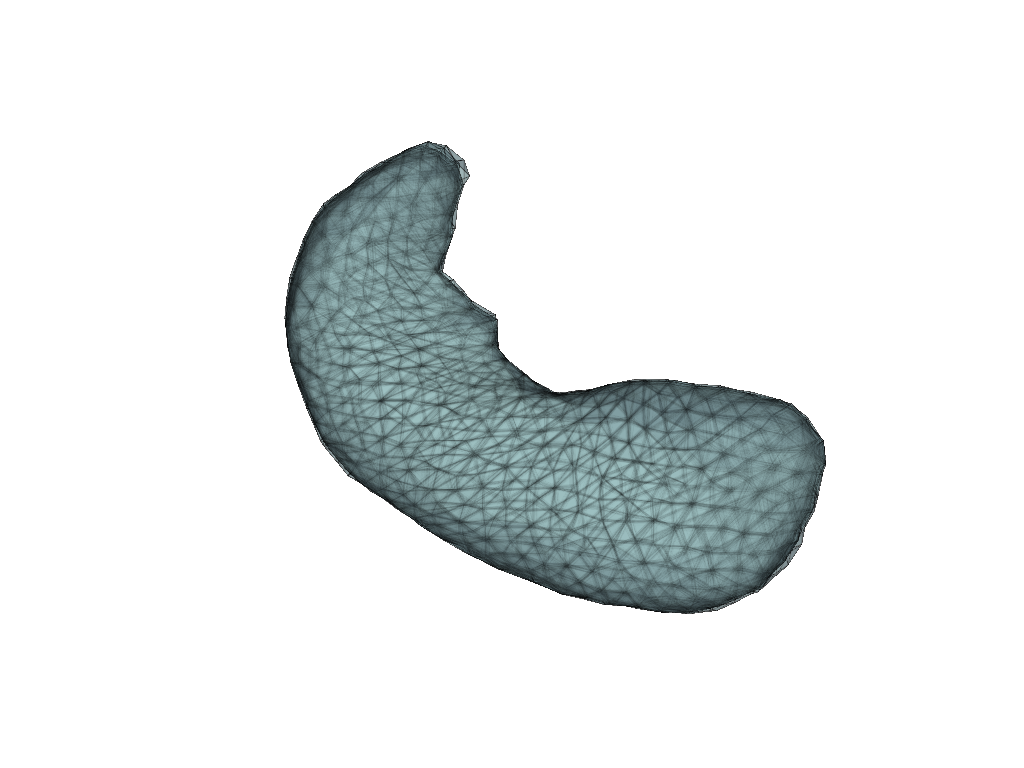
Deterministic atlas#
Save meshes in vtk format (as required by deformetrica).
[8]:
meshes_writer = DictMeshWriter(dirname=OUTPUTS_DIR, ext="vtk")
dataset = meshes_writer(meshes)
Use LDDMM to estimate the atlas.
[9]:
kernel_width = 10.0 # NB: influences the number of cp
registration_kwargs = dict(
kernel_width=kernel_width,
regularisation=1,
max_iter=2000,
freeze_control_points=False,
metric="varifold",
attachment_kernel_width=2.0,
tol=1e-10,
)
if not ATLAS_DIR.exists():
plddmm.learning.estimate_deterministic_atlas(
targets=dataset,
output_dir=ATLAS_DIR,
initial_step_size=1e-1,
**registration_kwargs,
)
Visualization#
Visualize the results.
[10]:
cp = plddmm.io.load_cp(ATLAS_DIR)
momenta = plddmm.io.load_momenta(ATLAS_DIR)
template = plddmm.io.load_template(ATLAS_DIR, as_pv=True)
[11]:
pl = pv.Plotter()
pl.add_mesh(template, show_edges=True)
pl.add_mesh(pv.PolyData(cp))
pl.show()
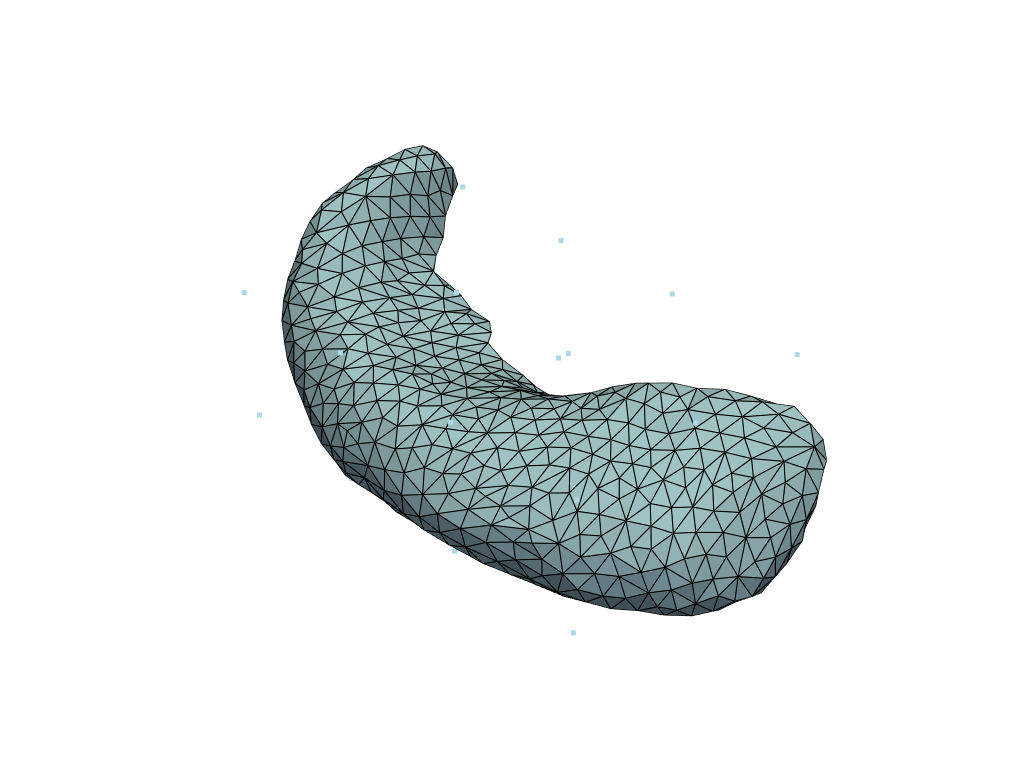
Visualize the reconstruction errors.
[12]:
rec_meshes = plddmm.io.load_deterministic_atlas_reconstructions(ATLAS_DIR, as_pv=True)
[13]:
plot_shape = putils.plot_shape_from_n_plots(len(meshes), n_axis=4)
pl = pv.Plotter(shape=plot_shape, border=False)
for index, key in enumerate(meshes.keys()):
mesh, rec_mesh = meshes[key], rec_meshes[key]
pl.subplot(*putils.plot_index_to_shape(index, plot_shape[1]))
# NB: assumes meshes are registered
euc_res = np.linalg.norm(mesh.points - rec_mesh.points, axis=-1)
pl.add_mesh(rec_mesh, scalars=euc_res)
pl.add_title(str(key), font_size=8)
pl.show()
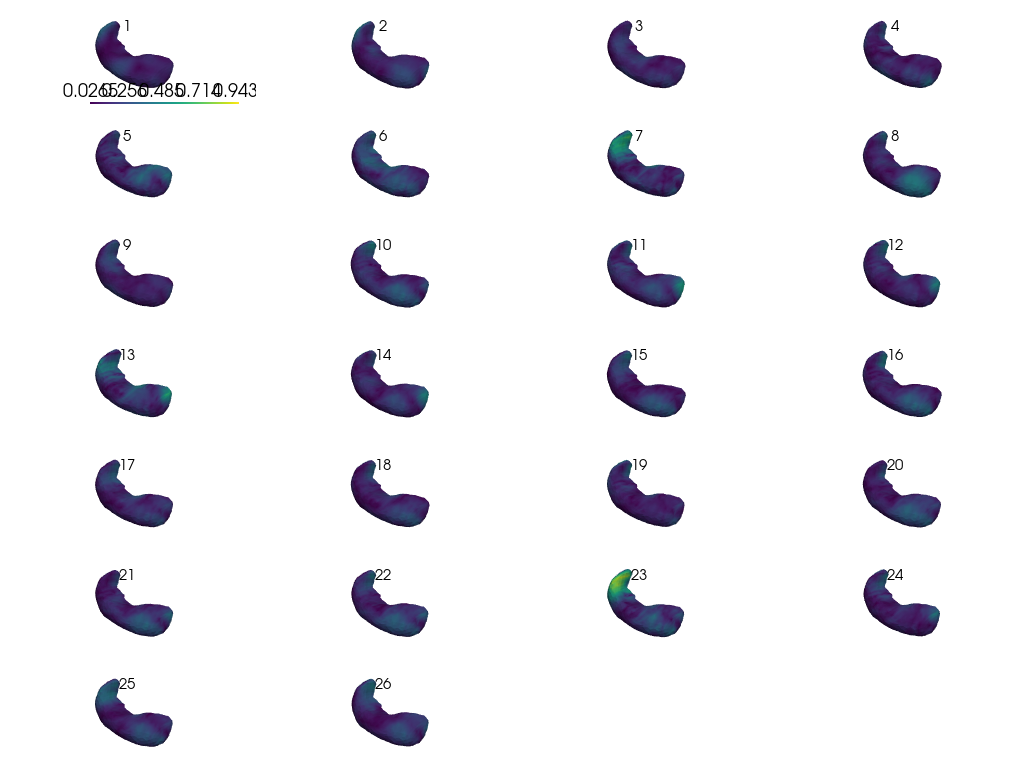
Visualize the flow from the template to each of the meshes.
[14]:
flows = plddmm.io.load_deterministic_atlas_flows(ATLAS_DIR, as_pv=True)
[15]:
pl = RegisteredMeshesGifPlotter(
shape=putils.plot_shape_from_n_plots(len(meshes), n_axis=4),
fps=10,
border=False,
off_screen=True,
notebook=False,
subtitle=True,
)
pl.add_meshes(ppdict.DictListSwapper()(flows))
pl.close()
pl.show()
[15]:
